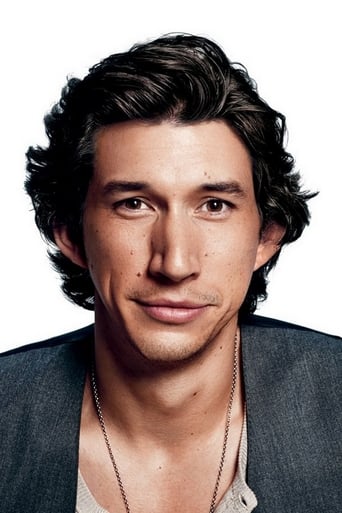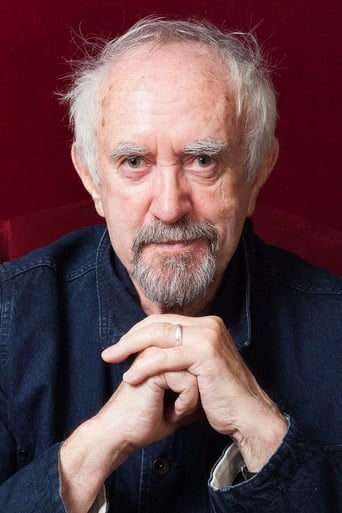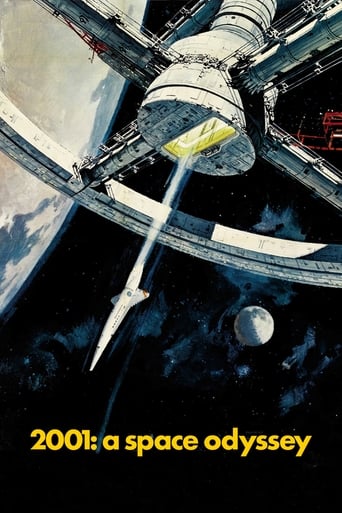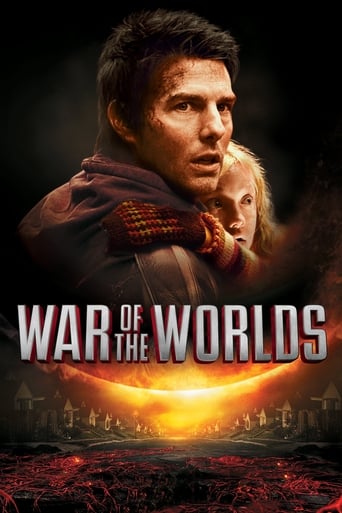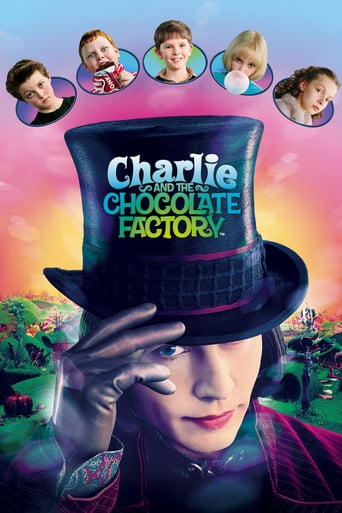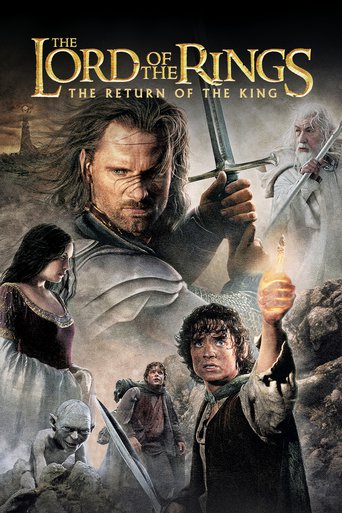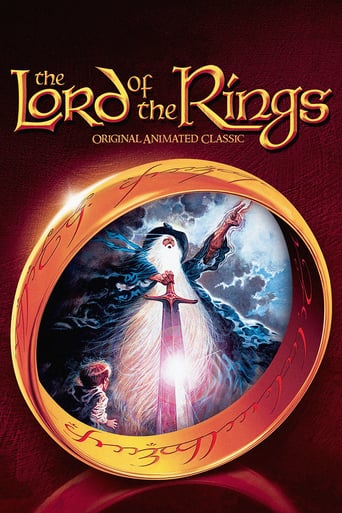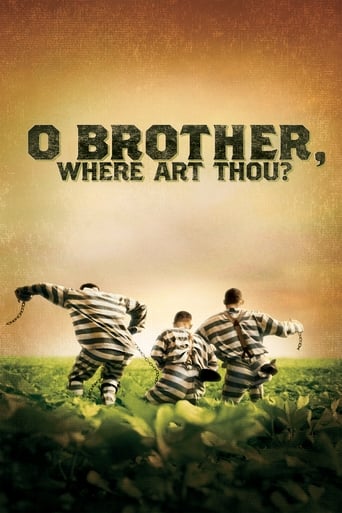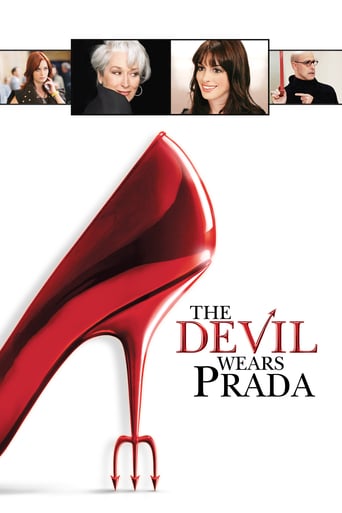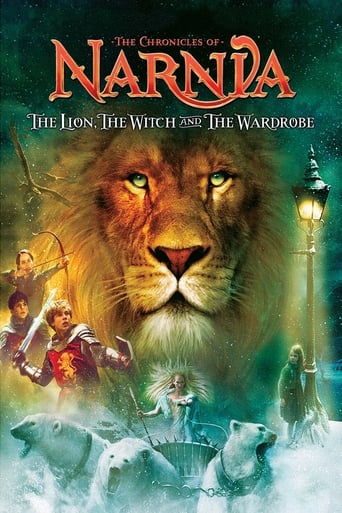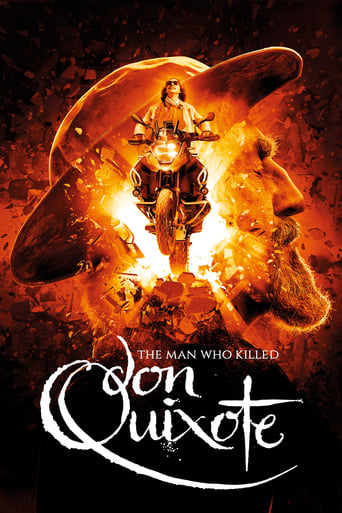
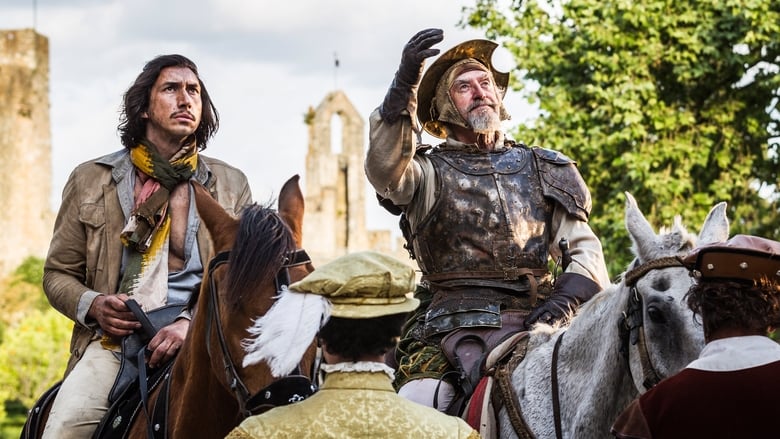
The Man Who Killed Don Quixote (2019)
Toby, a cynical film director finds himself trapped in the outrageous delusions of an old Spanish shoe-maker who believes himself to be Don Quixote. In the course of their comic and increasingly surreal adventures, Toby is forced to confront the tragic repercussions of a film he made in his idealistic youth.
Watch Trailer
Cast


Similar titles
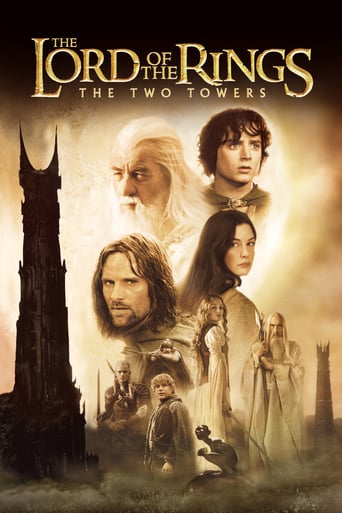
Reviews
Totally bonkers, dreamlike, vintage Gilliam and in the end even Lynchian weird. When it works it's brilliant, when it doesn't, it's baffling and sometimes boring. But even when the script doesn't work, the movie is saved by the incredible cast. It's among both Adam Driver's and Jonathan Pryce best work. Also, I'm in love with Joana Ribeiro.
Terry Gilliam has battled long and hard to make this film. I for one and grateful he persevered. It is not only beautiful to look at, but is at times funny, at times surreal, at times touching, at times dreamlike, but at all times involving of both the brains and hearts of the audience. Adam Driver is the Hollywood brat given a huge budget to make a movie about Don Quixote in Spain. One day he realised that he close to the village where he made his student version of the story, using locals. Curiosity gets the better of him when he sees a sign pointing the way to Don Quixote and discovers the man he cast in his student film has since stopped being a cobbler but believes himself to be the real Don Quixote. When the brat frees him from the prison his wife has him locked up in as a tourist exhibit, they embark on a series of adventures that mix up dreams and reality, and show the young man the damage he inflicted on those he used in his student film. The dreams and reality seamlessly overlap and provide the audience with non stop inclusion in what is going on. I absolutely adored this film, and went back to see it a second time only a few days later, knowing I will have missed a lot first time around, so full of images and colour and character that it is. Bravo Terry! And thank you.
Why Don Quixote? Why today? Gilliam answers brilliantly. Because cheap factory-churned romance still exists, and it deserves equal parts love and parodic rebuke. Because the Inquisition still exists. It's called ICE in America, or the Spanish national police evicting undocumented migrants from their already precarious homes. Because the duke in his castle still exists. He is a Russian magnate that has bought up entire hamlets in southern Spain; he is Putin and Weinstein and Trump rolled into one. Because there are many young women in the "me too" world world for whom the justice these dukes have to offer means exactly nothing.More than a personal obsession, beyond the self-deprecating and amusing meta-fiction and self-referentiality, this is a movie, much like the notoriously difficult to film source material, about the value of anachronism. About the value of allegedly bygone ideals and ethical principles in a world that too often seems to say to want to be 'over' them. A "post"-modern reflection on the contested value of prefixes. Is Don Quioxote really so old and out of place in our 21st century, as he already was for the 17th century, that we should want to throw him out like last year's iPhone?The fact that there are still inquisitions and galley slavers alive and well today may make us think twice. That the very idea of "justice for the downtrodden" should be called anachronistic by so many may make us think twice.The making of the film itself became something of a quixotic enterprise, and that itself seems poetic. In perfect resonance with the source material, which much like Gilliam's film, also happened to be made at a time of incredible violence and censorship toward the most vulnerable among us.The film can seem opaque at times to those who have not followed Gilliam's exploits or read Cervantes' classic. But being an unapologetic fan of the second, I can confidently say this is an act of careful reading and imaginative reinterpretation for our precarious present: the only kind of reading that matters in the end. Rest easy, Mr. Gilliam. You did good.
As humans, we create stories to represent ourselves, and to grasp the world that we don't understand. Arguably everything that we call art is in the end some sort of narrative, some system created to explain aspects that we didn't understand. Those stories are abstractions, a simplification that we use to reach deeper, to make order out of the apparent chaos. At the end of the 16th century, a growing number of european unrelated artists were working on novel revolutionary ways to represent ourselves, changing how we explain who we are and actually changing thus "who" we are. Cervantes, Shakespeare, Velázquez, and others, were giving us new modes of abstraction, new modes of (self) presentation. Mirrors. Quixote is all about that. A story about someone who creates himself based on other stories. A character who wipes the definition of reality by merging it with his own reality, co created by him and all the other storytellers who created the stories that drove him to his paralell reality. Then, the confrontation of his invented world with the reality of the world that surrounds me - the common depiction of this is having the "real" world take Quixote as "crazy". That's an extra simplification, an extra abstraction. Irony. Cinema could be in theory a fine medium to translate Quixote into, and that has been tried a lot of times. Now we have this Gilliam attempt, and the layers of this project, its own story, add a bit more to the excitment of Cervantes. Some information is required: Gilliam had tried to do this project before. It failed for a number of pedestrian reasons. That failed project has a story of its own, and generated a film about its (attempted) making. Now he completes it, and the synopsis could go like this: A filmmaker (Gilliam) is making a film, based on Quixote, after having failed to do it 16 years ago (we are one layer deep from reality). This new film is about a filmmaker (Toby) who is doing a commercial film of Quixote in Spain (film within a film, 2 layers deep). We learn that the first images we see are actually part of a film within by a breaking of the 4th wall Truffaut style. Toby had done a student version of Quixote 10 years before, and that film sort of magically pops back in his life. He watches this other Quixote versions, we get glimpses of it (another film within the film, still 2 layers deep but paralell to the other film). As Toby visits the village where he had made that student film, he finds out that film affected the reality of all the people involved in it: the actor from Quixote believes himself to BE Quixote, Toby's girl/lover had her life pretty much destroyed by having done the film, and so on. This new discovered reality, provoked by Toby's student film, invades the reality of Toby's life, and he is literally taken into the old film (he rediscovers the old actor/Quixote watching his film) and mistaken by Sancho. After this we see the unfolding of superficially Fellini inspired episodes, of reality blurred layers, plays on "what's real", and a Wellesian party on a remarkable building, near the end (more on that soon). In doing that, Gilliam uses a bunch of tricks, some well used, some not so. None of them is completely novel, i think. So we have bits of self-reference, such as when Toby literally removes english language subtitles from the screen. In one scene he claims to have written the lines that Quixote is telling him (that one is masterful as dialogue serving the concept).The gypsy who give Toby the dvd and keeps coming up is a fundamental character. A wizard of sorts, i believe a kind of surrogate to Cervantes on screen, a master puppeteer who manipulates and drives the narrative, all the way to the end. That's a genius character.I appreciate that Gilliam is a risk taker. This is a crazy imperfect film, which has some beautiful images. What I think Gilliam did well was to place the reluctant Sancho/Toby as a film director, and apparently the one through whose eyes we watch the story. That is self-referential in the way Cervantes conceived it, i think. So many people have misunderstood Sancho as some sort of "comic sidekick", the validation of Quixote's madness, and so on. But he is in fact the holder of the keys of paradise, the man who chooses to go mad, the character who sees both realities, and chooses to be in both almost always at the same time. He is one of the most powerful fiction characters ever, he is all of us at some moment of our lives, and he truly is the best character of Cervantes, and i believe the one where Cervantes projected his own self more clearly. In the original Gilliam project, Depp was going to play the part. Oh I wish he had... That's my personal film. Watching this new version i was simply imagining how Depp would handle the shifting between realities, between layers of fantasy. Driver is not quite up to the part. Pitty...I also don't understand why he had to channel the representation of Spain as a "Carmenesque" world. Carmen is after all a collection of spanish (mostly andalusian) clichés filtered through the eyes of a frenchman. They became popular in Europe inthe 19th century and still represent the images that most people associate with the meaningless concept of "spain" (bullfight, hot tempered love, sun, harshness and a certain concept of tragic fate). It is sadly ironic that Gilliam, who has some nice visual intuitions, and solid storytelling complex concepts fell into this so easily avoidable trap. I suppose this won't be such a problem for someone who doesn't now Spain, or watched it only through a touristic gaze (which is shamelessly sponsored by the very spanish government in their promotion of the country).Visually, he mixes his own well established style, the odd wide angles (often wellesian) with the by now required standard Quixote scenery... that thing about a guy in a horse and another in a mule riding the desert against sun light. But than he brings for his delirious climax his architectural eye, and that's what grabbed me more:Our characters are taken to an obnoxious russian millionaire's palace. The event is a masquerade ball (Arkadin style), where pretending to be Quixote won't apparently seem so crazy. That palace is a remarkable building. It's a convent and church, in Portugal, built across several centuries, with many of our best architects from each time participating in it. It is a collage of styles, each one integrating in the whole while retaining its own character. He films mostly the central church, a Templary octogonal church, a mystical powerful space, dynamic in that it invites moving around it; and 2 of the four big cloisters. The whole place has always been the center of strong spiritual representations that predate Christianity in Portugal, and it still retains its power. I'm thankful that one of the great film architects that we have got to film it. This is probably the second best use of portuguese architecture in cinema, after Welles filmed his Othello's "sauna scene" in a magical light portuguese cistern in Morocco.Anyway Gilliam opposes openness (desert, big landscapes, etc.) to the tragedy of the architectural space, where the most intense plot points happen. First the humilliation and breaking of Quixote's fantasy (check how that is ostensibly show as a film set, with visible lights, artificial props, SD indications, etc.). And than, the inevitable death of Quixote. We close our final (circular) narrative layer here: the shattered Toby, who killed Quixote, assumes his invented reality, and becomes Quixote himself, with his lover as Sancho. They ride with the former Quixote's body to bury him, and the meet the giants that Gilliam had shot for his first failed attempt. We actually see the test footage he had made. We are left there, with our Toby turned Sancho turned Quixote literally entering the film that Gilliam never made. That was masterful.I will choose Welles and Fellini over Gilliam. This is a flawed uncontrolled film. But Gilliam is all about that: letting his intuition (mostly visual) contaminate all the rest. I respect him. Watch this, but consider all the layers. It will make it richer, i think.


